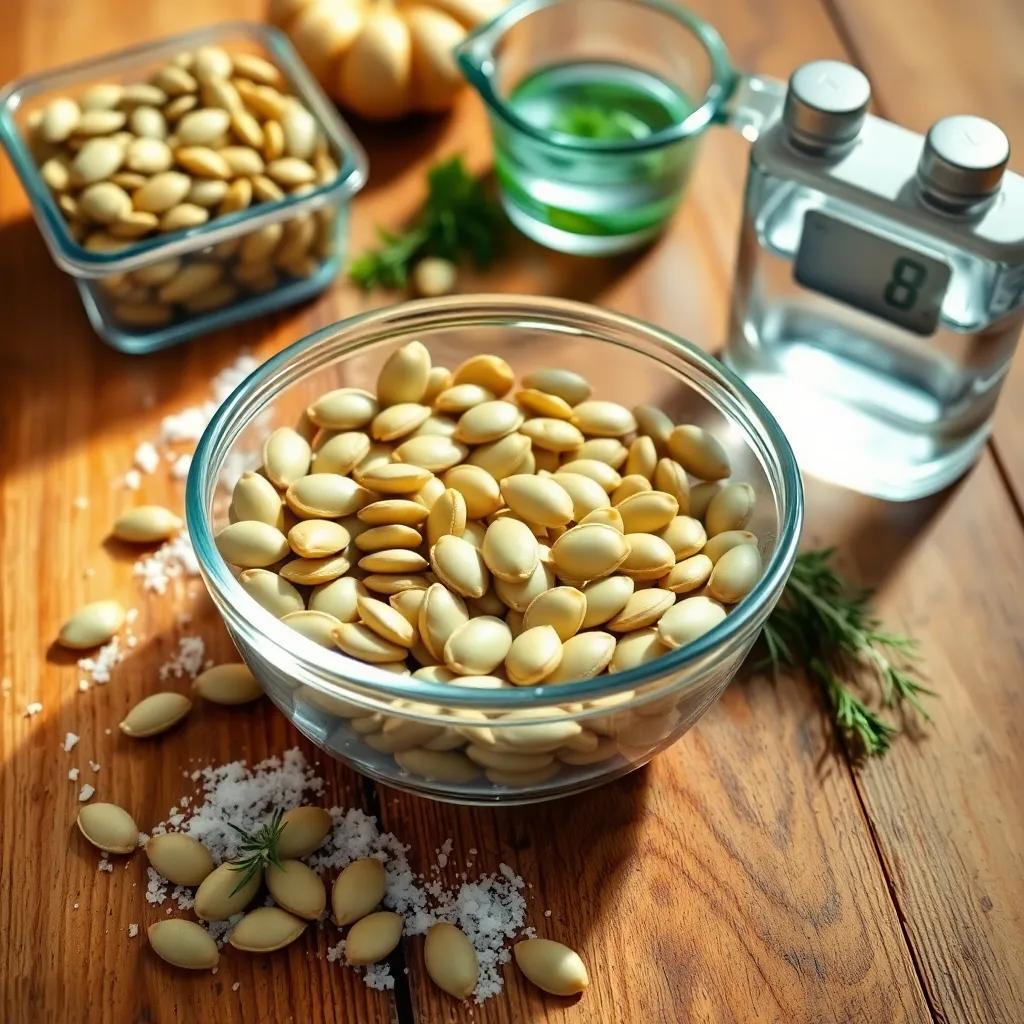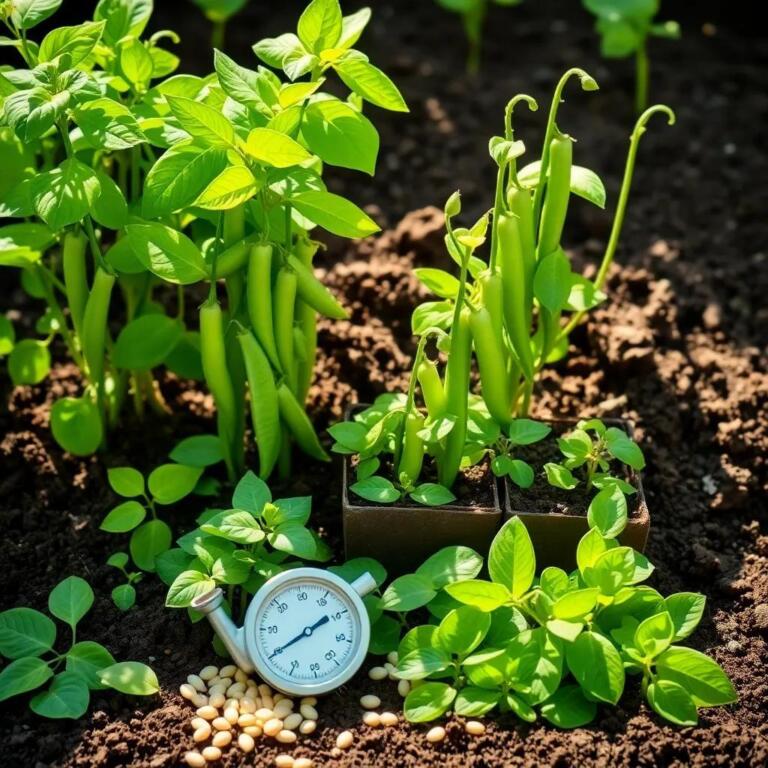Are you ready to grow your own appetizing snap peas? I’ll guide you through teh fascinating world of germination, sharing tips and tricks to help those little seeds sprout into vibrant plants. Let’s dig in and discover the secrets to a successful garden adventure!
Understanding the Germination Process of Snap Peas
Germination is like magic—it’s the moment when a little seed transforms into a sprouting plant! So, how does this enchanting process work for snap peas? Let’s break it down. When you plant snap pea seeds, they’re in a dormant state, waiting for the right conditions to spring into action. Its all about a few key ingredients: moisture, warmth, and oxygen.
First, letS talk about moisture. Seeds need water to trigger the germination process. When you plant them in moist soil, they start to absorb water, which awakens enzymes and kickstarts growth. However, too much water can lead to trouble—like seed rot! So, it’s a balancing act of keeping the soil damp but not soggy.
Next up is temperature. Snap peas are cool-season plants, meaning they thrive when the soil is between 60°F and 75°F (15°C to 24°C). If it’s too cold, germination slows down. On the flip side, if it gets too hot, the seeds might decide they’re just not into sprouting. So, finding that sweet spot is key.
Don’t forget about oxygen! Just like us, seeds need to breathe.Good soil aeration helps roots develop and promotes healthy growth.You can achieve this by ensuring your soil is loose and well-draining—think of it as giving those seeds some space to wiggle!
Once the conditions are just right, the magic begins. The seed coat splits, and a little root pushes down into the soil, while a shoot heads up toward the light. Before you know it, you’ll see those baby snap pea plants popping up, ready to grow into delicious veggies. How exciting is that?
Factors influencing Snap Peas Germination Time
Now that we’ve got the basics down,let’s explore what can affect how long it takes for our beloved snap peas to germinate. A few key factors come into play that can either speed things up or slow them down.
- Seed Quality: The fresher the seed, the better! Look for seeds from reputable sources. Old or poor-quality seeds might just take a vacation instead of sprouting.
- Moisture Levels: As mentioned earlier, the right amount of water is vital. Consistent moisture keeps the seeds happy and encourages them to germinate more quickly. But remember—too much water can lead to rot! You don’t want a soggy mess.
- Soil Temperature: Keeping the soil in that sweet temperature range—between 60°F and 75°F—is super vital. If conditions get too chilly or too toasty, your seeds may take thier time to wake up.
- Soil Quality: Well-draining, nutrient-rich soil is like a cozy home for your seeds. Compact, heavy soils can stifle growth, while loose, airy soil allows roots to spread out and thrive.
- Depth of Planting: How deep you plant your seeds matters! Ideally, they should be about an inch (2.5 cm) deep. too shallow, and they might dry out or be exposed to pests. too deep, and they may struggle to break through.
- Light Exposure: While the seeds don’t need light to germinate,once they sprout,they will be reaching for that sun. Make sure that once they pop up, they’re getting enough sunlight to grow strong and healthy!
By keeping these factors in mind, you can create the best environment for your snap peas to germinate quickly and efficiently. happy gardening!

ideal Conditions for Growing Snap Peas
Creating the right environment for your snap peas can make all the difference in how well they grow. So, let’s talk about the ideal conditions that snap peas love. It’s like throwing a little party for your plants—let’s make it a good one!
- Soil Quality: Snap peas thrive in well-draining soil that’s rich in organic matter.A nice mix of loamy soil ensures that they have the nutrients they need while helping prevent waterlogging. adding compost or well-rotted manure can give your soil a nutrient boost!
- Sunlight: These green beauties love the sun! Aim for a spot where they can soak up at least 6 to 8 hours of sunlight each day. If you don’t have a sunny garden, consider using grow lights if you’re starting them indoors. They’ll be reaching for the sun in no time!
- Watering: Consistent watering is key,but avoid making them swim! Keep the soil evenly moist,especially during germination. A good trick is to check the top inch of soil; if it’s dry, it’s time to water.Just remember, snap peas don’t like soggy feet!
- Temperature: As we discussed before, snap peas prefer cooler temperatures. Plant them when the soil is around 50°F to 75°F (10°C to 24°C). If it’s too hot, they may bolt, which means they’ll send up flowers quickly and stop producing those delicious pods.
- Fertilization: While snap peas aren’t heavy feeders, a light application of a balanced fertilizer during planting can help.Just don’t overdo it; too much nitrogen can lead to lush leaves but fewer pods!
With these ideal conditions, your snap peas will be well on their way to becoming vibrant and healthy plants. Your gardening adventure just got a little more exciting!
tips to Speed Up Snap Peas Germination
Now that you’ve prepped the perfect environment, let’s talk about how to get those snap peas sprouting faster! I mean, who wouldn’t want to see those little green shoots popping up as soon as possible? Here are some fun and effective tips to speed up the germination process:
- Pre-soaking Seeds: Before planting, soak your snap pea seeds in water for 12 to 24 hours. This softens the seed coat and helps them soak up moisture faster. It’s like giving them a little spa treatment!
- Scarification: Some seed coats are tougher than others.Gently nicking or scratching the surface can help water penetrate more easily. Just be careful not to damage the embryo inside!
- Warm Germination Environment: If you have a seedling heat mat, use it! Keeping the seeds warm can kickstart the germination process. alternatively, placing your seed trays in a warm location (like atop your refrigerator) helps too.
- Using a Seed Starting Mix: A quality seed starting mix provides the right balance of moisture and nutrients. It’s lighter and fluffier than regular garden soil, allowing for better drainage and root progress.
- Covering with Plastic Wrap: After planting, use clear plastic wrap over your seed trays to create a mini greenhouse effect. This can help retain moisture and warmth until the seeds sprout.
- Proper Watering Technique: instead of pouring water directly on the seeds, try using a spray bottle to mist them lightly. This prevents displacing the seeds and keeps the delicate area moist.
By using these tips, you’ll be well on your way to seeing those lovely snap pea sprouts in no time! It’s all about creating the right conditions and giving them a little extra love. Happy planting!
Common Mistakes to Avoid When Germinating Snap Peas
While growing snap peas is exciting, there are a few common mistakes that can trip you up. Let’s talk about what to watch out for so your gardening experience can be as smooth as possible.After all, we want those pea plants to thrive, right?
- Overwatering: It’s easy to think that more water equals happier plants.But snap peas can suffer from overwatering, leading to root rot. To avoid this, always check the top inch of soil; if it’s dry, it’s time to water.
- Poor Soil Drainage: Heavy, compacted soil can suffocate seeds.If your soil doesn’t drain well, consider mixing in compost or sand to improve its structure. Your snap peas will appreciate being in a well-draining environment!
- Ignoring Temperature: If it’s too hot or too cold, your seeds may just sit there like they’re on vacation! Be patient and plant them at the right time of year for optimal germination.
- Planting Depth Mistakes: Planting too deep or too shallow can hinder growth. Make sure the seeds are around an inch (2.5 cm) deep. This allows them to sprout without too much effort.
- Neglecting Light Requirements: While snap pea seeds don’t need light to germinate,they do need it once they sprout! Make sure they get plenty of sunlight or they might grow leggy and weak.
- Using Old or Low-Quality Seeds: Old seeds might have a low germination rate. Always check the expiration date and consider buying fresh seeds from a reputable source.
Avoiding these common pitfalls will help your snap peas flourish. Remember, gardening is about trial and error, and even the best gardeners learn from their mistakes. Keep experimenting and enjoy watching your snap peas grow!

